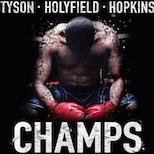Serena Williams’ C-Walk: Controversy or Culture?
08.07.2012
SPORTS
Forget what Team USA did to Nigeria in basketball, what Serena Williams did to Maria Sharapova at Centre Court at the All England Tennis and Croquet Club to bring home the gold medal is easily the most dominant performance thus far in the Olympics. It’s just too bad that the thing that everyone is focusing on is the 30-year-old’s celebratory dance. As much as we enjoy individuality and are far from a detractor of celebrating, perhaps Ms. Williams crip walk was ill advised.
But was Serena Williams really paying homage to a gangster’s life?
Los Angeles Times sports columnist Bill Plaschke seems to think so, as he tweeted “Serena C-walking at Wimbledon only shows how long she’s been away from home, separated from violence and death associated with that dance.” However, as with most things that have spawned from urban America, the origins of the C-walk are far removed from the dance once it hit the mainstream. It doesn’t make it any better, but it also doesn’t mean that we should allow it to overshadow her complete dismantling of the Russian that has long battled Serena for the number one spot in the world tennis rankings.
Surely, she didn’t say to herself “let me pay homage to the villains from the hood” as she broke into the five second dance. American swimmer Ryan Lochte probably never considered the origins of the grill he flashed after winning the gold medal for the 400m individual medley. Although both the crip walk and the grill have two vastly different origins, the pop culture desensitization of both are the same. When Brent Barry C-walked during the 2003 NBA All-Star 3-point contest, his dance was met with giggles and devoid of criticism. That was obviously because Barry wasn’t crip affiliated nor from Compton. Or maybe it’s because the dance is viewed today as harmless.
But when Serena Williams does it, it’s now serenading a murderer’s lifestyle?
The funny thing is that most observers who have been critical of Williams quick dance had no idea what she was doing until they checked out the explosion of social media. Once they became privy to the dance, they decided to trace its origins and saddle Williams with the unflattering “ghetto mentality” tag. Williams worked her ass off to get herself into a position to dominate the world in tennis. She comes from a city where her and her friends have done the dance without any inkling of being empathetic to gang culture. The dance originated from the inner city and is done by many who have no gang affiliation whatsoever. That’s just what happens when a dance permeates into the mainstream. The next time you watch MTV’s America’s Best Dance Crew, ask yourself if the multi-cultured dancers are sympathizing with gang culture when they bust out a C-walk.
Fox Sports columnist Jason Whitlock suggested that the dance was “premeditated” as a means to show out the “snobs at Wimbledon a taste of the Compton girl they fear.” Williams has already shown the world that she’s the baddest of them all. She was clearly exhilarated by her utter destruction of the then- number one tennis player in the world and opted to celebrate.
And what’s wrong with celebration? Apparently, to many it’s a disrespectful way to show up the competition. To some, playing the game like it was “meant to be played” is the only way to go. No celebrating, no taunting, no dancing, no nothing. But the game is not just a game to the African-Americans that breakthrough in sports that they weren’t allowed to participate in years ago. The game is far more than points and trophies. It’s a way out.
Many athletes from urban environments had to work their way through the impoverished confines of their city in order to punch their ticket out of the hood. When you listen to a story like the unbelievable tale of survival and struggle that retired NFL running back Curtis Martin delivered at his Hall of Fame induction, you can see why we celebrate once we get to the top. Success isn’t given to them, it is hard earned. And in a sport that was once considered an “all-white sport,” the fact that Serena Williams is one of four tennis players to achieve a Career Golden Slam (win all four Grand Slam tournaments and the Olympic gold medal) is even more reason for one to dance.
She earned the opportunity to dance for a few seconds. Get over it.
But the other side of the coin is that she unknowingly left herself open to criticism the moment that she finished her dance. After all, it is the crip walk and she knew that she may be in hot water the moment she sheepishly backtracked in front of the press during the post-match news conference.
“Actually, there is a name. But I don’t know if . . . it’s inappropriate,” Williams said. “It’s just a dance we do in California.”
As always, an African-American has to be aware that they are still African-American in the eyes of the press. As mentioned in the Gabby Douglas article, one misstep is magnified tenfold. The crip walk, although harmless in its 2012 intent, will be slammed because of the simple fact that it still has “crip” in the name. And mainstream America is deathly afraid of The Crips. And although pop culture borrows heavy from hip-hop culture that is produced in the inner cities, that doesn’t mean that they will criticize it any less and Serena has to be aware of that. It was a brief lapse of judgment that doesn’t need Serena to stand in front of a camera and deliver a public apology. Everyone should be aware that Ms. Williams isn’t going to celebrate a lifestyle that claimed the life of her older sister in 2003. No, this was just a moment of sheer joy.
Let’s celebrate yet another African-American first and national victory at the 2012 Summer Olympics, rather than shroud her success in controversy.





